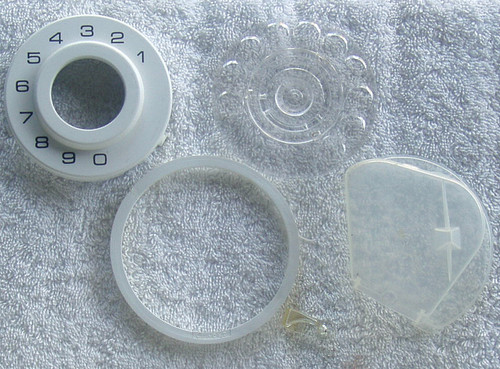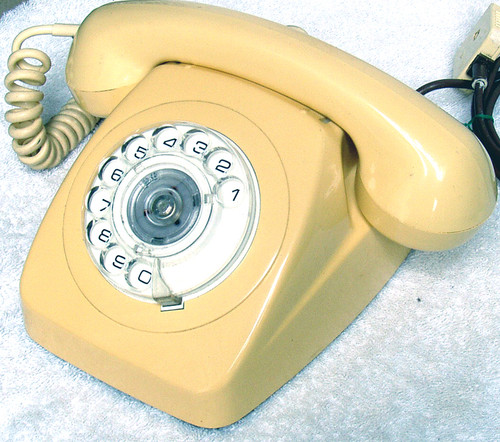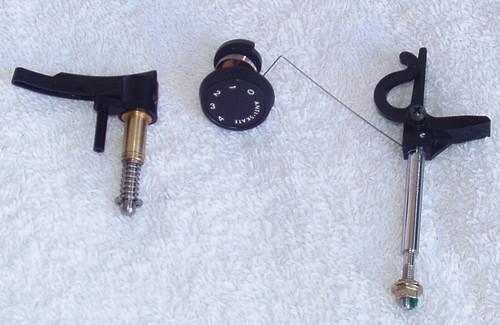Collectable and difficult to find Green Australian Rotary Dial Telephone
For the telephone collector, this is a hybrid 800 (801 & 802) see information about this further down in my description
Tested and fully functioning but please read my notes below regarding the use of rotary dial telephones on modern telephone domestic lines
Rotary Dial Telephone
800 Series
Model: 801/802 (see details below)
Manufacture date of this instrument: somewhere between 1971 & mid 1980's
Official colour: Fern Green case, handset, curly cord & line lead
The 801 series began in 1963 and ran through to the early 1970's, followed by the 802 series
For the collector who likes every part of their instrument to be authentic, this telephone is in fact a hybrid of the 801/802's
The case, number ring, handset, curly cord, line lead are all 801. 801 schematic inside the case.
The dial (with metal finger rest) is the 71816 from Belgium, manufactured in 1971 - this predates the later Australian made dial (see photograph to look more closely at the dial, it is constructed quite differently to the later Australian releases)
The base, bells, printed circuit board are 802's
The bell board is type PBA-3 and has the adjustable ringer knob
The printed circuit board is type PCA-2 (AWA)
I strongly suspect that this telephone was originally an 801 and it went to the Telecom Workshops for servicing and came out with a replacement base, bell board and PCB.
If you find all of this boring, then just think of this item as a nice old 1970's - 80's green Australian rotary dial telephone!
Complete with the old style 605 plug but I am also supplying an adaptor and cable (605 socket to RJ12) so that this phone can be plugged into an RJ12 socket (looks a bit like a small network cable socket and all VOIP modems use them)
Underside (base) identifcation markings:
AWA 81 S.1/23 F
TELECOM 802
Manufactured by AWA - Amalgamated Wireless Australia was a major manufacturer and supplier to the telecommunications industry for many years, now just a faded memory in the mists of time!
Telecom was the forerunner to Telstra
COSMETIC CONDITION:
CLEANED AND STERILISED - BOTH THE BODY OF THE PHONE AND THE HANDSET (lots of mouths have been "spitting" into the handset transmitter especially!)
Clean - Smoke Free environment
Particular attention paid to the receiver, microphone mouthpiece and handset centre area as these are areas most often handled.
No scratches
NO CRACKS TO THE CASING AT ALL
NO CRACKS OR DAMAGE TO THE DIAL
Colouring is in good condition
Central dial cap (clear) is fitted - this is the push and twist type.
Dial number label is supplied - THIS IS NOT AN ORIGINAL (no LISTEN FOR DIAL TONE message) but could be useful for use as a template to make your own dial label using white light grade cardboard OR just buy a replacement dial label, there are various sites that sell these (blanks)
No insulation sheath damage to either the handset cord or line lead
Handset curly cord is still in very good condition, nice tight loops - cleaned and sterilised.
TESTING:
These 800 series telephones often just keep on working for years and years.
Dial rotation is smooth (nice whirr) and at the correct speed (tested the mark/space ratio too)
Handset plungers work smoothly
Connected to our home 2 wire telephone line (TPG NBN Home Phone service which is actually VOIP) to make my tests
A "normal" 2 wire domestic telephone line will work just the same but these types of telephone connections are pretty rare these days
I did notice the line lead has just the blue/white conductors (A & B of the telephone line) the RED conductor has been cut at both ends. This in no way affects the operation of the telephone as the red conductor was used to fit an extension bell. You will not be able to use an extension bell without changing this line lead.
Dial tone received fine
Due to the pulse signalling used (very old method) contemporary telephone systems such as VOIP via your internet provider (NBN etc) will NOT WORK on outgoing calls. Their equipment is not designed to "understand" the pulses and you cannot dial a number. HOWEVER this does not apply to old 2 wire telephones lines (not many of those left now though) OR you can fit a special adapter between this phone and the VOIP modem that will convert the pulse signalling to DTMF signalling, the system used now.
Next, I called this telephone.
All is fine on incoming calls - nice clear mechanical bells ringing, the sound of which is adjustable with the button on the base of the telephone (from a shrill ring adjustable down to a buzzing sound)
Picked up the handset and all is good with the world!!
Nice clean clear conversations can then be had.
I did notice one small thing, while holding the handset I can create a small amount of low level noise (crackling) which seems to be caused where the handset curly cord enters the handset. I looked very closely and can see no damage at all but something is amiss. This noise is not constantly present, it is low level and not a big deal.
SUMMARY:
INCOMING RINGING IS FINE
INCOMING CONVERSATIONS, GREAT
OUTGOING CALLS - SIMPLY NOT POSSIBLE! (with the caveats mentioned above)
So it is best to treat this telephone as a nice "feature piece" in the house, it WILL work fine with incoming calls but do not attempt to make outgoing calls.
NEVER rely on this telephone for emergency calls - it simply will not work.

















